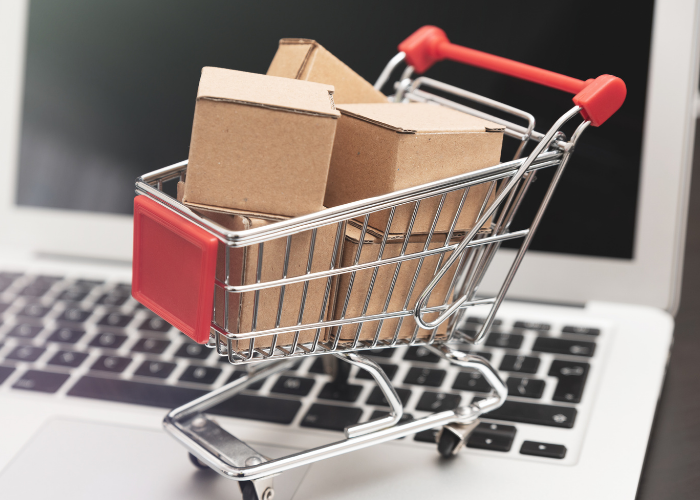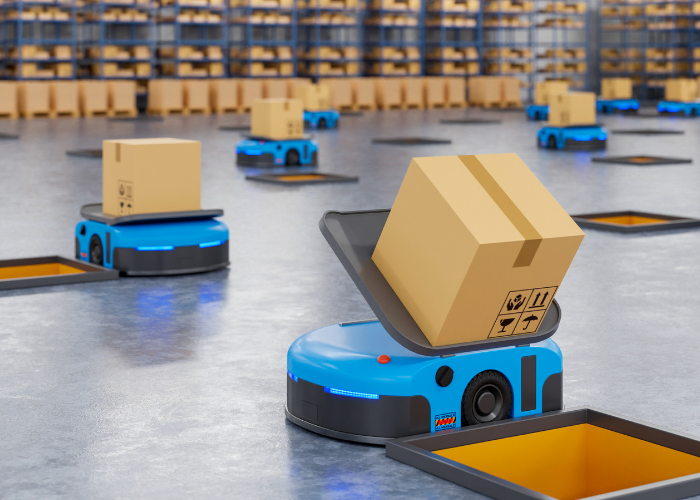
With so many people making their purchases online, it is the fastest-growing retail channel. More than 90 percent of Americans make purchases online.
For CPG companies both large and small, companies need to have eCommerce strategies, whether that be selling direct to consumer or Amazon. For SKU’s emerging brands, selling online can present one of the biggest opportunities, offering higher margins and the ability to reach a wide range of consumers. But it also can be challenging to navigate.
We turned to eComm guru Brice McBeth of Reap Commerce, a veteran SKU mentor, to share his expertise on what it takes to win online.
SKU: What are some best practices for DTC?
McBeth:
- Platforms like Tiktok and Pinterest show promise in decent-to-high conversion, but haven’t proven (yet) to scale.
- Get on Shopify and use a proven template. Don’t try to make the site perfect or overly innovate the shopping experience.
- Use Facebook & Instagram for TOFU (Top of Funnel) Advertising. You are introducing your brand to people who are NOT shopping for your products.
- Use Google for MOFU / BOFU (Middle / Bottom of Funnel). Here, you are staying in front of people who are looking for similar products, your products, or your brand.
SEO: not all it’s cracked up to be
SKU How important is search-engine optimization (SEO) – the art and science of getting pages to rank higher in search engines such as Google – .to drive sales?
McBeth: In my opinion, SEO is a hoax! Small business shouldn’t waste too much time on anything beyond the basics… investing heavily into blog content for the purpose of SEO can be EXPENSIVE and not generate a return for years. Consider that most CPG brands are competing against juggernauts like Amazon, Walmart, Target, Ebay, every grocery store, every club, and hundreds of other established brands with infinitely higher domain authority.
This traffic is NOT free, doesn’t come quickly enough, seldom converts to sales. I frequently see conversion rates of 0.00% for blog traffic (not an exaggeration).
Driving traffic
SKU: What is one of the easier ways to drive DTC traffic?
McBeth: Don’t overlook the opportunity for Email and text acquisition! It can take 8 to 16 touch points before a consumer chooses to buy. Well planned sequences can increase those touch points at a very low cost and drive conversions and loyatly!!
Focus on LTV rather than ROAS (return on ad spend)! ROAS is a marketing metric that measures the amount of revenue earned for every dollar spent on advertising.Ad space is too competitive (expensive) these days to produce a profitable ROAS on the first purchase.
By the way, category pages – where products are shown – typically convert higher as a landing page for paid traffic than most home pages because they do a much better job of merchandising product!

SKU: . Is it important to have sales on Amazon and your site?
McBeth: It is critical to have both. You have the opportunity to control the brand experience and own the relationship with your fanatic customers on your .com.
Still, Amazon has over 300 million active monthly shoppers and can have a 5 to 15 times higher conversion rate for CPGs. And over 65% of product searches on the internet start on Amazon, NOT Google!! This is where brand discovery happens at scale! This is where brand discovery happens at scale! Additionally, many big box retailers and clubs will make a determination of their interest in your product based on your ability to scale on Amazon. Period.
And after consumers discover your brand in retail, on facebook, on google, on your website, or from a friend, those same consumers go to AMAZON to find YOUR brand. When you’re not there, then you just forfeited that conversion and potential fanatic to a competitor.
consumers go to AMAZON to find YOUR brand. When you’re not there, then you just forfeited that conversion and potential fanatic to a competitor.
If that’s not enough, most brands find themselves waking up a few years into their brand building journey to a situation where dozens of unauthorized 3rd-party sellers are selling product on Amazon — usually at prices that compromise the value of the brand… and frequently with content that does NOT well represent the brand. It can take thousands of dollars and months of undoing this damage that could have been prevented with an initial investment into Amazon to begin with.

SKU: Are there channels in addition to Amazon that brands should be exploring?
McBeth: We’re also seeing increase momentum and velocity on Walmart.com — although it represents only 10 percent of the market size of Amazon, Walmart.com grew 97 percent to Amazon’s 14 percent last year. We’re also seeing a higher intent to buy for CPGs on Walmart.
Be realistic with your expectations, though. Both channels can be extremely difficult to create profit until you are able to scale as well as generate return frequency. Most successful brands real;ize that the first few months (or years) for DTC & Amazon are an investment, not a profit center!
SKU: What are the options for increasing awareness of your Amazon store.
McBeth: Amazon offers a handful of advertising options. Sponsored Product Ads put your items at the top of search result. Sponsored Brands Ads put your logo, store link and top products at the top of category searches- Product Display Ads present your products as alternatives on similar products- DSP presents your Amazon product on 3rd party websites (like Retargeting) but can be expensive with high minimums.
Off-Amazon promotions can be one of the most frequently overlooked forms of Amazon advertising. Namely, using affiliate relationships and email campaigns can have a massive impact on accelerating growth on Amazon, even despite a lower initial gross margin due to paying Amazon commissions and fees. By sending traffic to Amazon rather than your own store, you can typically generate a much higher conversion rate and send the right relevancy signals into Amazon that can help optimize and grow your account.
Shopping in stores and online
SKU: What are the channel considerations about going to direct to consumer when you also are in retail?
McBeth: Is there the potential for channel conflict?I don’t see this as a conflict. And “omnichannel” is not a buzzword. Rising tides raise all ships (“shops”?). Simply put, consumers shop in stores and on Amazon. And sometimes they seek out more information on Google.and if you’re lucky, your website.
Being discovered online and on Amazon will lead to in-store interest and retail sales. Being discovered in retail will lead to consumers seeking out more info and convenient options online and on Amazon. This is not a “online vs offline” conundrum. All channels are, or should be, an important and viable part of the brand’s flywheel.


